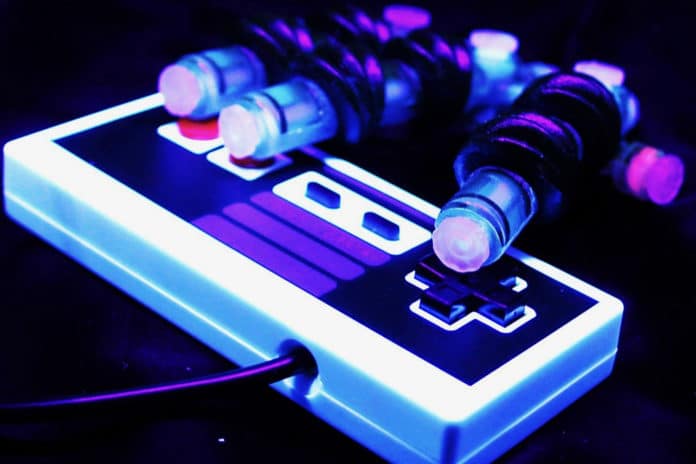Soft robots’ inherent safety and adaptability have sparked interest in their use for applications like prosthetics and biomedical devices. Unfortunately, controlling the fluids that make these soft robots bend and move has been especially difficult – until now.
Engineers at the University of Maryland have 3D printed a soft robotic hand that is agile enough to play Nintendo’s Super Mario Bros and complete the first level of classic computer game in less than 90 seconds. The team was able to 3D print fully assembled soft robots with “integrated fluidic circuits” in a single step.
The three-fingered soft robotic hand can independently move each of its fingers in response to changes in air pressure. A separate compressor pumps air into the hand via just a single rubber hose, which has three non-electric devices known as “fluidic transistors” at its finger end. The integrated fluidic circuit allowed the hand to operate in response to the strength of single control pressure.
In a demonstration of their creation, the team designed an integrated fluidic circuit that allowed the hand to operate in response to the strength of single control pressure. Applying a low pressure caused only the first finger to press the Nintendo controller to make Mario walk, while a high pressure led to Mario jumping. Guided by a set program that autonomously switched between off, low, medium, and high pressures, the robotic hand was able to press the buttons on the controller to successfully complete the first level of Super Mario Bros. in less than 90 seconds.
Another important benefit of the team’s strategy is that it’s “open source,” with the paper open access for anyone to read as well as a link in the supplementary materials to a GitHub with all of the electronic design files from their work.
“We are freely sharing all of our design files so that anyone can readily download, modify on-demand, and 3D print – whether with their own printer or through a printing service like us – all of the soft robots and fluidic circuit elements from our work,” said Sochol. “It is our hope that this open-source 3D printing strategy will broaden accessibility, dissemination, reproducibility, and adoption of soft robots with integrated fluidic circuits and, in turn, accelerate advancement in the field.”
Currently, the team is exploring the use of their technique for biomedical applications, including rehabilitation devices, surgical tools, and customizable prosthetics.
